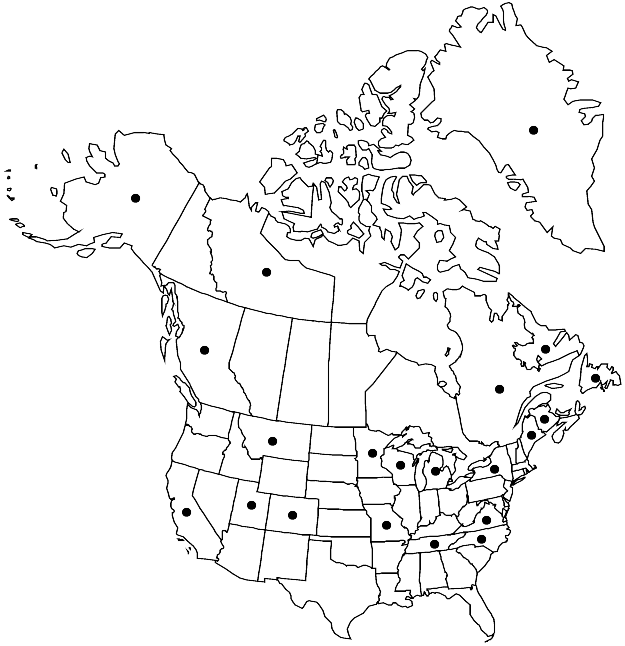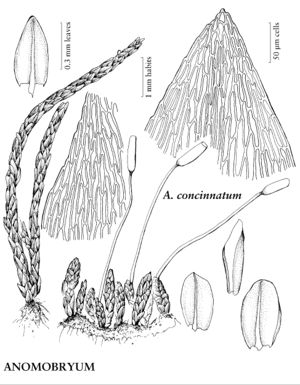Difference between revisions of "Anomobryum concinnatum"
Öfvers Kongl. Vetensk.-Akad. Förh. 18: 277. 1861.
FNA>Volume Importer |
FNA>Volume Importer |
(No difference)
| |
Revision as of 19:44, 24 September 2019
Stems weakly julaceous. Leaves strongly imbricate when dry, flat to somewhat concave, 0.6–1.4 mm; costa percurrent to short-excurrent, mucro smooth; distal laminal cells elongate-rhomboidal, 40–60 µm, 6:1, walls not or weakly sinuate. Specialized asexual reproduction by leaf axil bulbils, red-brown, leafy, small. Seta 2–3 cm. Capsule erect or suberect, red, ovate-cylindric, 1–3 mm; peristome single, highly reduced, of unknown origin; endostome segments and cilia absent. Spores 8–15 µm.
Phenology: Capsules mature Jul–Sep.
Habitat: Acidic seepy or damp soil, soil over rock, ledges
Elevation: low to high elevations (0-3500 m)
Distribution

Greenland, B.C., N.B., Nfld. and Labr., N.W.T., Que., Alaska, Calif., Colo., Maine, Mich., Minn., Mo., Mont., N.Y., N.C., Tenn., Utah, Va., Wis., Mexico (Chiapas, Chihuahua, Distrito Federal, México, Querétaro), Eurasia.
Discussion
Anomobryum concinnatum is a widespread boreal-temperate species, rarely with capsules, identical to material of the synonym A. leptostomoides in gametophyte features. Specimens assigned to the latter are few and produce erect capsules with highly reduced peristomes. These specimens have been interpreted as fertile specimens of A. concinnatum, a name with priority. Because A. concinnatum is rarely separated from A. julaceum, the distributions of the two in North America are tentative; A. concinnatum is the more widespread.
Selected References
None.
